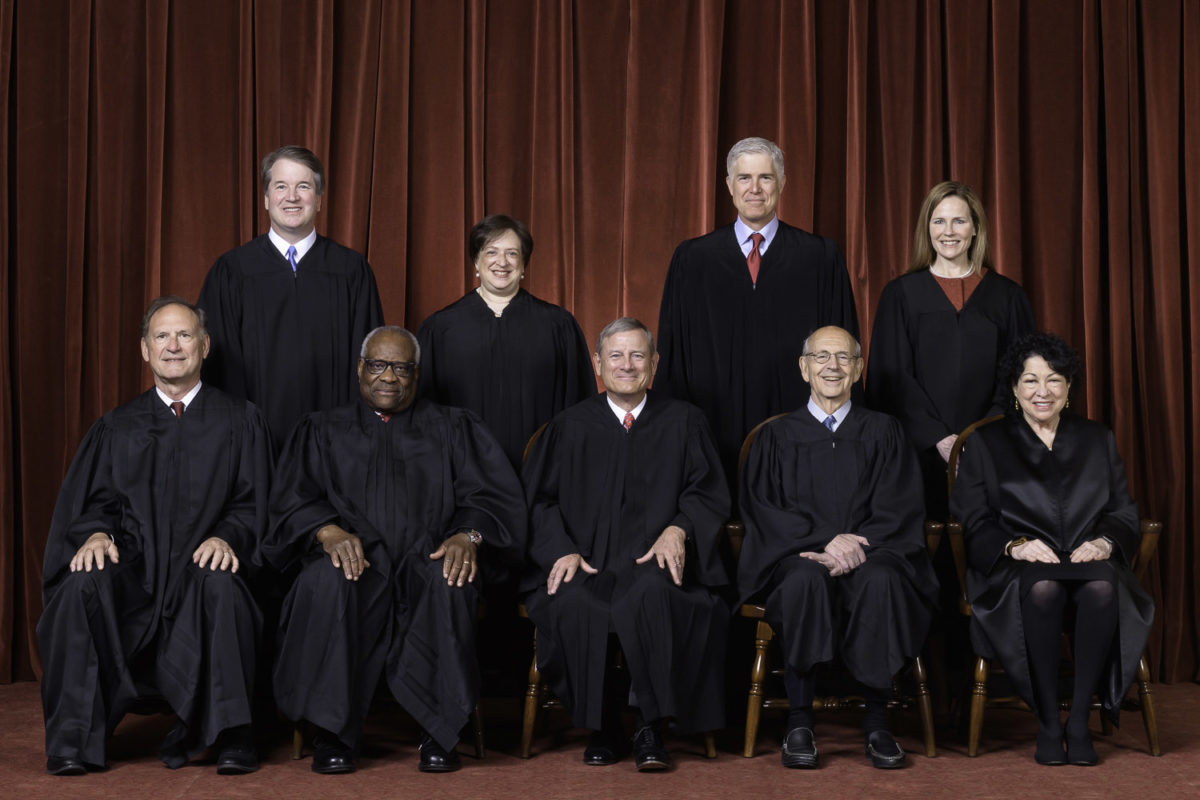Back in 2021, President Joe Biden created the Presidential Commission on the Supreme Court of the United States. That December, they issued their report, which boldly proclaimed: “As a legal matter, we conclude that Congress has broad power to structure the Supreme Court by expanding (or contracting) the number of Justices. The prudential question is more difficult, and Commissioners are divided on whether Court expansion would be wise.”
Actually, it wasn’t bold at all, entirely ducking the question: Should we expand the Supreme Court?
Many Democrats were deeply disappointed, believing action is needed to offset the three justices appointed during the Trump administration. (Not to mention then-Majority Leader Mitch McConnell blocking Barack Obama’s nominee Merrick Garland from even getting a hearing in 2016.)
Combine the report’s failure to take a position with Democratic senators like West Virginia’s Joe Manchin and Arizona’s Kyrsten Sinema opposing additional justices, and it seems safe to assume nine will remain our nation’s number for some time to come.
GET HISTORY’S GREATEST TALES—RIGHT IN YOUR INBOX
Subscribe to our HistoryNet Now! newsletter for the best of the past, delivered every Monday and Thursday.
FDR’S COURT-PACKING SCHEME
The last serious attempt to expand the Supreme Court happened in 1937. President Franklin Delano Roosevelt sought to add extra justices, presumably sympathetic to his views. He argued we should appoint an additional justice for any member of the court over age 70 who did not retire. (This would result in two additions to our current Supreme Court, as Justices Thomas and Alito have crossed that threshold.)
Obviously, FDR’s effort did not result in any additional justices. It is generally portrayed as a gross overreach by the executive branch and, ultimately, a triumph for the judicial.
Which makes sense. Why would anyone consider changing the number of justices, when we all know from the very beginning we’ve had … wait, we had six originally?
And we went up to 10 at one point?
It’s true. And you could actually argue FDR got what he wanted anyway.
Not the Constitution’s Concern
As the the Presidential Commission on the Supreme Court pointed out, Congress has the right to determine the number of justices. The Constitution doesn’t specify how many there are supposed to be.
Since its establishment in 1789, the number of Supreme Court Justices has changed six times. Congress sometimes increased the number if the president were a member of their party and they wanted to strengthen his hand by giving him a chance to name new justices. Similarly, they reduced the number in a bid to prevent appointments when the other party held the White House. (Only one justice ever has been impeached, but Samuel Chase was acquitted in 1805 and continued serving until his death.)
Nine didn’t become the number until 1869, during the presidency of Ulysses S. Grant. It was a time of relative political stability: After the Civil War, Republicans won 10 of 12 presidential elections and generally held Congress. Quite frankly, their hand was strong enough they didn’t have to worry about further strengthening it.
Of course, the Supreme Court has always been politicized. Actual politicians have served on it, notably President William Howard Taft and California Gov. Earl Warren.
Supreme Court Justice Amy Coney Barrett felt obliged to defend herself and colleagues as not “partisan hacks” in 2021 — while appearing with Sen. Mitch McConnell at his McConnell Center at the University of Louisville. (The same majority leader despised by many on the left when he pushed through judges nominated by fellow Republican Donald Trump, including Barrett herself, while blocking hearing for Democrat Barack Obama’s nominee Merrick Garland.)
DID FDR ACTUALLY BEAT THE SUPREME COURT?
Finally, in 1937, it appeared the number would change again. In one corner: A massively popular president — FDR won reelection in 1936 with 60.8% of the popular vote and a 523-8 Electoral College margin.
In the other: A Supreme Court that kept blocking portions of his New Deal by 5-4 votes.
Since the number of justices remained unchanged, it’s easy to say FDR lost. But the fact is he got what he wanted. After he started his push, those losses suddenly turned into 5-4 victories. Overnight, Justice Owen Roberts went from blocking the administration to waving it forward. Whether this was a genuine change of heart or a calculated decision to deflate the court packing, only Owen can say.
Likewise, it isn’t as if FDR paid a lasting political price. He went on to win a third term and then a fourth. (In 1944 — his “narrowest” victory — he took 53.4% of the vote and won the Electoral College 432-99.) Nor did his allies, as the Democrats held Congress right up until his death in 1945.
THE COURT TODAY
Today, polls reveal a deepening disillusionment with the Supreme Court itself. Even its own members are publicly critiquing it. Clarence Thomas pointedly praised the days before current Chief Justice John Roberts.
“The court that was together for 11 years was a fabulous court,” Thomas said. “It was one you looked forward to being a part of.”
(It’s particularly striking since Roberts and Thomas nominally allies — both are Republican-appointed and, each term, typically vote the same way over 70 percent of the time.)
Understandably, talk of changing the number of justices on the court has percolated again.
SHOULD WE ADD (OR SUBTRACT) SUPREME COURT JUSTICES NOW?
What would have happened if the Supreme Court dug in? If they kept blocking the New Deal and FDR decided to use his full political clout against it? Well, we were spared having to answer the question.
Congress has the power to expand the Supreme Court. Should they exercise it? That’s another question entirely. Back in 1937, Chief Justice Charles Evans Hughes made a strong argument why they should not: “There would be more judges to hear, more judges to confer, more judges to discuss, more judges to be convinced and to decide.”
(Translation: More judges, more problems.)
So if there ever does come a time when Congress decides the Supreme Court needs a new headcount … maybe we shouldn’t pack the court so much as shrink it.
historynet magazines
Our 9 best-selling history titles feature in-depth storytelling and iconic imagery to engage and inform on the people, the wars, and the events that shaped America and the world.






